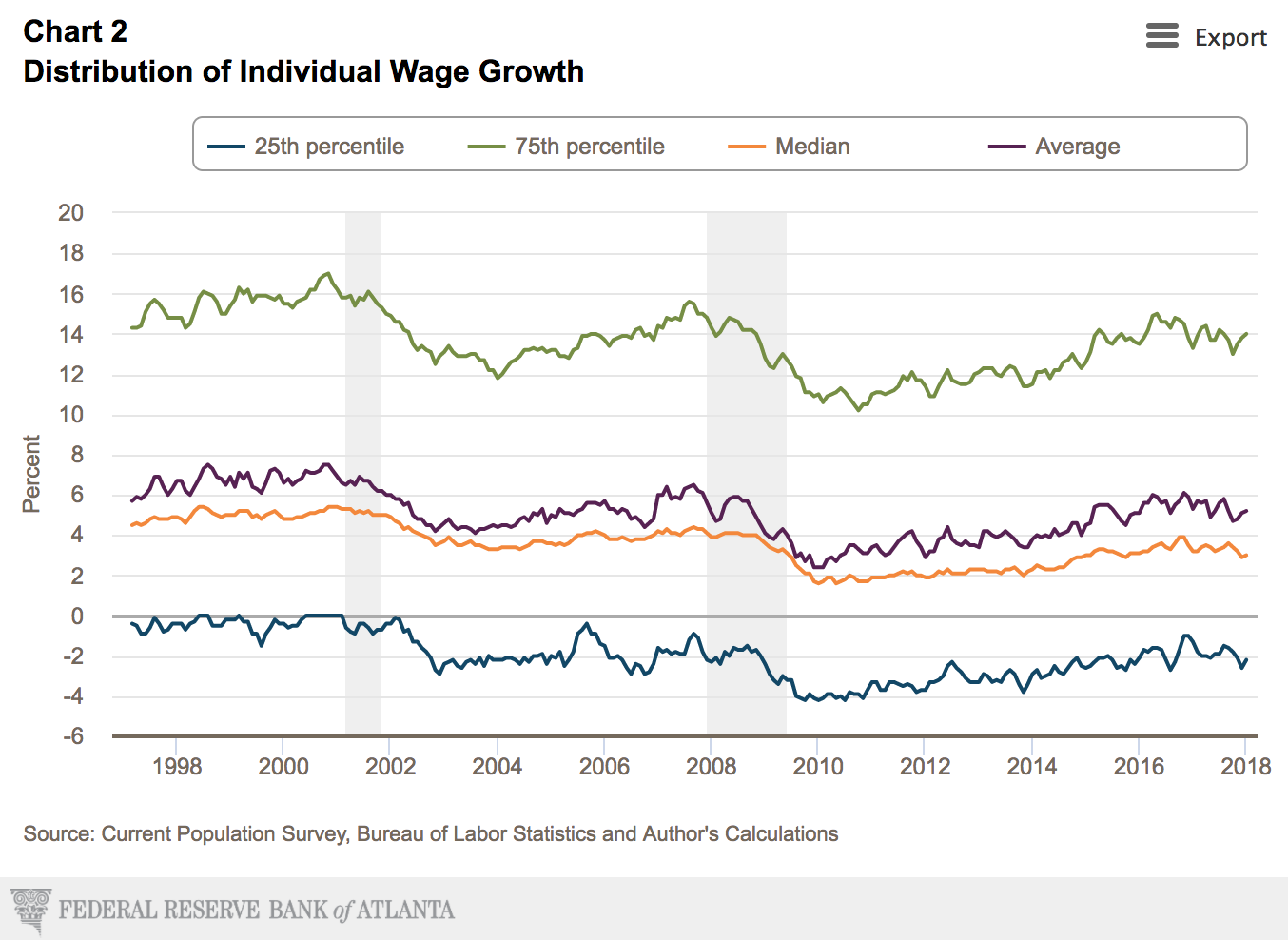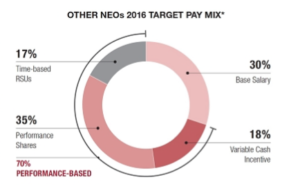
by Kate Evert | Mar 8, 2018 | Compensation, Economy, Wage Increases
“Will I get a raise? How much?” is a question on everyone’s mind at this time of year.
Since January, the press has been full of stories telling everyone to only expect a 3% raise. Well, compensation consultants hate generalities almost as much as statisticians do.
There is a reason that Commonwealth HR Consulting keeps a link to the Atlanta Fed front and center on our resource page. Not only do we think that the Atlanta Fed gets it (using a methodology developed by the San Francisco Fed), but we think this is a wonderful resource for organizations to reference based upon your location(s), labor market(s), and labor force(s).
As for that 3.0% increase? We urge you to take a look at Charts 2 and 3 at the Atlanta Fed’s site. In January, the Distribution of Individual Wage Growth showed:
25th Percentile = -2.2%
50th Percentile/Median = 3.0%
Average = 5.2%
75th Percentile = 14.0%
Chart 3 indicates that 14.9% of the group that the Fed tracks, received a 0% increase.
Some food for thought. Especially if you are an employer who is consistently giving increases to employees who have not upgraded their skills in years … and at the same pace as those employees who possess hot skills, the 14% hot skills. Read More Here

by Kate Evert | Nov 16, 2017 | Compensation, Economy, Wage Increases
[vc_row][vc_column][vc_column_text]
On their earnings call recently, Equifax announced that due to their recent cyber breach, the executive team would be foregoing any annual incentive this
year. Read More Here. “Well that’s good I thought. About time some executives owned up, felt the pain, …” But then this little voice in me wondered … how much pain are they really going to be feeling? Is this for real, or just a good story? So I did what any good compensation consultant would do:
I read their proxy.
It turns out that this noble act isn’t necessarily as noble as it first sounded. First, in their comp design, the target annual incentive comprises only 18% of the Target Pay Mix for the Named Executive Officers. Then, if the 2017 plan follows the design of the 2016 plan, 15% of the annual incentive plan is tied to Corporate Operating Revenue and 65% is tied to Corporate Adjusted EPS. Something tells me that the chances of Corporate Operating Revenue meeting expectations this year aren’t very good. And as for Corporate Adjusted EPS,
which they footnote is a non-GAAP financial measure, well why that is a questionable measure in an annual incentive plan is a blog for another day.
Read More Here.

by Kate Evert | Nov 9, 2017 | Economy, Human Capital
While attending the University of Chicago’s Business School (now Booth), I learned a lot about the key principles of capitalism, including the concept of human capital. As an alum, they have turned me onto one of the most interesting forms of organizations that I think exists: social enterprise. I first heard the term social entrepreneurship at a U of C Management Conference in the early 2000s. Then, at the Management Conference in 2010, I saw at presentation that perfectly demonstrated the power of what social entrepreneurship could do: two students, moved by the devastation caused by the earthquake in Haiti, wanted to develop something to immediately improve the lives of women and children on that island. One issue that was not being addressed was their security at night. Using their unique talents honed before coming to Chicago, combined with the lab in social entrepreneurship, these students developed a solar powered light that would float, not sink, and hang easily in makeshift shelters. I came home from that conference energized by what social entrepreneurship can accomplish.
LuminAID went into production, has several products, and starred on Shark Tank.
Given the impetus behind LuminAID’s founding, it’s not surprising that in the aftermath of Hurricane Maria, and realizing that 70% of Puerto Rico was still without power, LuminAID co-founders, Anna Stork and Andrea Sreshta, decided to take action themselves. Anna and Andrea filled a few suitcases with solar lights and chargers (a newer product) and flew to Puerto Rico to bring reusable power to over 300 homes. These solar chargers help charge phones even when there’s no electricity and the built-in lanterns bring light to homes at night. Over 25,000 LuminAID solar lanterns and phone chargers have been sent to Puerto Rico.
So if you get as charged by the concept of social entrepreneurship, or are just looking for a way to help people in Puerto Rico, why not donate $10 to sponsor a light for Puerto Rico? Or, spend $25 and get a solar light for yourself and sponsor one for hurricane relief as well. Read More Here.

by Kate Evert | Aug 30, 2017 | Economy, Labor Markets, Wage Increases
Figuring out what’s been going on with wage growth has been one big game of Clue. Economists have been scratching their heads trying to solve the mystery. It seems that the San Francisco Fed has focused their magnifying glass on the right things and solved the Who Done It.
The issue is that Mrs. White (remember her?) and her other Baby Boomer friends are retiring. That knife of hers has sliced nearly a full percentage point off of the growth in median weekly earnings, from 5.2% to 4.2%, on an annual basis.
Retirees being replaced by less expensive workers isn’t new; it’s always happened. It is just so much more pronounced with approximately 10,000 or so Baby Boomers (The Silver Tsunami) daily exiting the work force. Read More Here and Here

by Kate Evert | Aug 4, 2017 | Economy, Wage Increases
Following this morning’s news, and the better-than-expected news, on jobs numbers, I heard this story which had been filed yesterday. Today’s good news does not change the the reporter’s analysis. What really caught my attention was what this reporter stressed towards the very end:
“And, of course, the hourly wage numbers in the employment report are an average.” He goes on to explain some cities that vary from the average and some jobs that do.
This, has been the story all along. As my statistics professor used to stress, “look at the variance around the mean!” Read More Here

by Kate Evert | May 17, 2017 | Compensation, Economy, Labor Markets, Wage Increases
For college seniors entering the work force this year after graduation, there’s a lot to look forward to: high employment rate, higher salaries. The future is bright. Or is it? Others have a more pessimistic outlook. They paint a dimmer picture for this next generation: slow wage growth, and more inequality.
You might be left scratching your head with all the conflicting sources. Here’s what’s really going on: the data doesn’t lie, but it doesn’t give a full picture of what’s happening. That’s why compensation consultants are using more specific data, considering factors like industry, location, and demographic.
To read more of the positive, HERE or HERE or more of the negative HERE or HERE, but proceed with caution.







